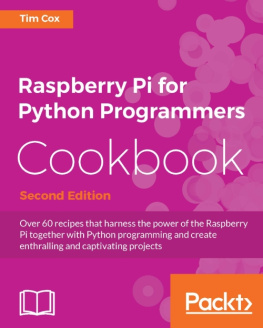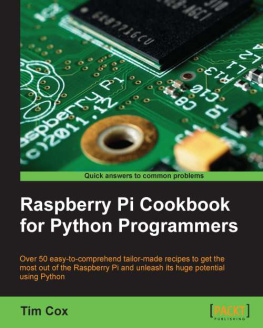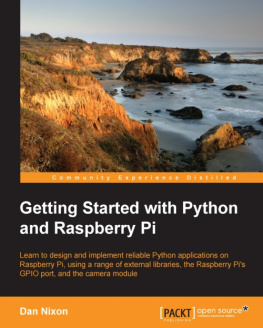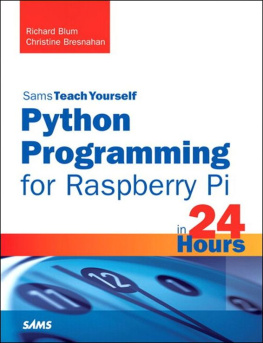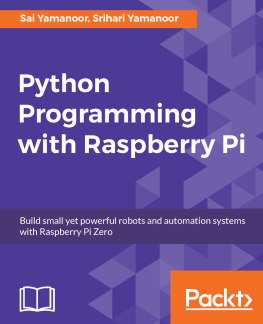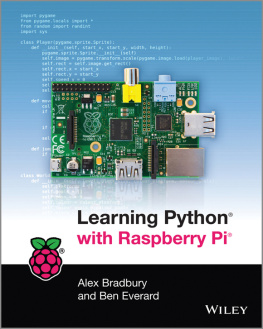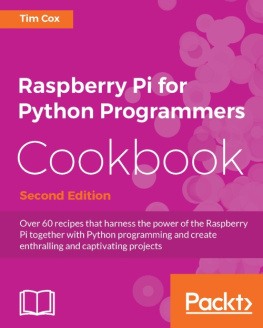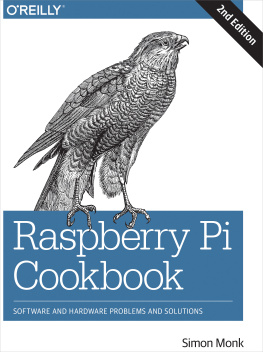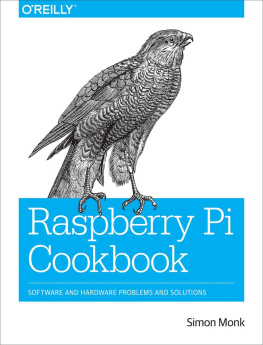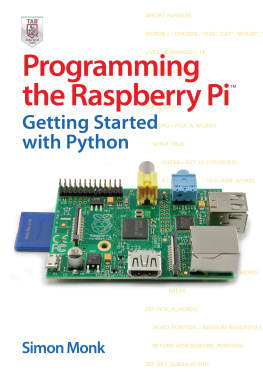About the Author
Tim Cox lives in England with his wife and two young daughters and works as a software engineer. His passion for programming can be traced back to one Christmas in the mid 1980s when he received a Sinclair Spectrum 48k+ home computer (a joint present with his two elder brothers). By typing out and modifying BASIC programs, while dreaming about building robots, an interest in computers and electronics was sparked, which has never faded. This interest saw him through university, where he earned a BEng in Electronics and Electrical Engineering, and into a career in developing embedded software for a wide range of applications, for automotive, aerospace, and the oil industry, among others.
Keen to support the vision behind the Raspberry Pi, reignite engineering in schools, and encourage a new generation of engineers, Tim co-founded the MagPi magazine. Thanks to the dedication and time of the volunteers who contributed to it every month, it has become the official magazine for the Raspberry Pi and continues attract an ever-increasing number of readers (and writers) worldwide. Through his site PiHardware.com, Tim produces electronic kits and helps people learn about the Raspberry Pi and hardware interfacing; each of them is supported with detailed instructions and tutorials to help novices build the knowledge and skills for their projects.
This is Tim's first ever book; it mirrors his own experience of discovering the Raspberry Pi and showcasing its fantastic abilities.
Writing a book about the Raspberry Pi wouldn't have been possible without the creation itself, so thanks to the Raspberry Pi foundation for their hard work (and good humor) in making it a huge success. The Raspberry Pi community consists of an excellent group of exceptionally helpful people from all over the world, and it has been a pleasure to be involved with it from the start. In particular, I would like to thank The MagPi team that has supported me by reviewing the chapters and helping me achieve the best possible standard. Also thanks to the Pi3D team who worked hard to get their library running with Python 3 for the book.
Thanks to my family, particularly my wife Kirsty, who has supported me every step of the way and daily suffered my obsession with the Raspberry Pi. The excitement my daughters, Phoebe and Amelia, have as they discover new things inspires me to share and teach as much as I can.
About the Reviewer
Dan Purdy is a Front End Developer at a digital agency in London. His fascination with computers started early on when he first caught sight of a ZX Spectrum loading a program from a tape. When he first got his hands on a Raspberry Pi, he started building a number of tools, games, and applications sometimes to help with the day job but primarily for fun.
Dan currently works on a variety of projects, from product prototypes and e-commerce sites to enterprise-level web applications, while continuing to experiment with new frameworks, technologies and his Raspberry Pi.
Dan was previously a technical reviewer for Raspberry Pi Gaming Second Edition and Wordpress 4.0 Site Blueprints .
www.PacktPub.com
eBooks, discount offers, and more
Did you know that Packt offers eBook versions of every book published, with PDF and ePub files available? You can upgrade to the eBook version at > for more details.
At www.PacktPub.com, you can also read a collection of free technical articles, sign up for a range of free newsletters and receive exclusive discounts and offers on Packt books and eBooks.
https://www.packtpub.com/mapt
Get the most in-demand software skills with Mapt. Mapt gives you full access to all Packt books and video courses, as well as industry-leading tools to help you plan your personal development and advance your career.
Why Subscribe?
- Fully searchable across every book published by Packt
- Copy and paste, print, and bookmark content
- On demand and accessible via a web browser
Preface
Since the release of the Raspberry Pi computer in February 2012, millions of people have been introduced to a new way of computing. Modern home computers, tablets, and phones are typically focused on providing content to the user to consume, either as a passive viewer or through basic interaction via games and activities.
However, the Raspberry Pi turns this concept on its head. The idea is that the user provides the input and the imagination, and the Raspberry Pi becomes an extension of their creativity. The Raspberry Pi provides a simple, low-cost platform that you can use to experiment with and play with your own ideas. It won't feed you information; it will let you discover it firsthand.
This book takes everything I have found exciting and interesting with the Raspberry Pi and puts it in an easy-to-follow format.
I hope that people will read this book and start their own Raspberry Pi journey; it has so much to offer, and the book is aimed squarely at showing off what you can achieve with it.
Like any good cookbook, the pages should be worn and used, and it should be something that is always being pulled off the shelf to refer to. I hope it will become your own, personal, go-to reference.
What this book covers
, Getting Started with a Raspberry Pi Computer

